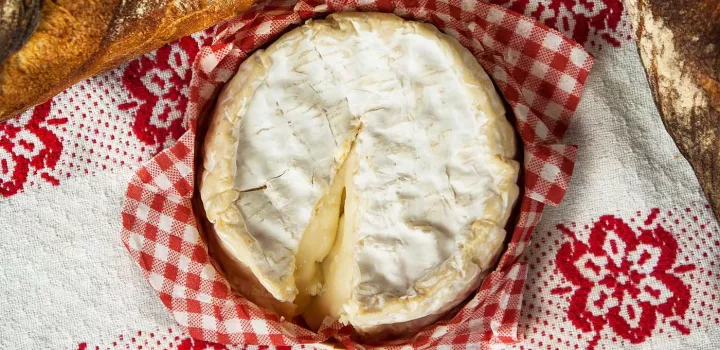
Fundamentals of Cheese: Understanding Raw Milk Cheese
Pasteurization as we know it was developed around 1884. Cheese production goes back about 7000-ish years.
While heat-treating certain foods and beverages was common before the specific process of pasteurization was codified, it follows that throughout most of its history, cheese would have been made with raw animal milk.
So why do we understand so little of it today?
What is Raw Milk?
Raw milk refers to animal milk that has not been pasteurized or otherwise heat-treated in order to prevent foodborne illnesses due to certain microbes that may be present. In addition to pasteurization, in which milk is heated to 160˚F for 15 seconds, or 145˚F for 30 minutes, thermalization is another, gentler process where milk is heated to about 149˚F for 15 seconds. In either case, milk is transformed out of its raw state into something considered safer for human consumption.
With the advent of refrigeration and other food handling safety standards, however, raw milk isn’t quite the gamble today as it may have been in the past. If a food processing facility is operating without adherence to common cleanliness standards, pasteurized milk is just as likely to cause harm as raw milk.
Benefits of Raw Milk
Much like some vegetables retain their maximum health benefits by being consumed raw rather than cooked, raw milk also has a more nutritive profile than milk which has been heat-treated. Gut-healthy “good bacteria” are often eradicated in the process of cautiously warding off the possibility of bad bacteria in the pasteurization process. Additionally, raw milk contains more protein than its pasteurized counterpart, and is actually easier to digest for those who may be lactose intolerant because of the presence of certain enzymes which facilitate the production of lactase, the antidote to lactose in the digestive system.
Because cheese is a concentrated dairy product where much of its water content has been removed, these benefits are multiplied when it comes to the value of a serving of raw milk cheese versus a serving of raw milk itself.
Back to Basics: 5 Major Cheese Styles Every Chef Should Know
The flavor of raw milk cheese is also much more intense than cheese which has been made with pasteurized milk. Raw milk better retains both seasonality and sense of place, where flavors in the milk can reflect what animals might have been grazing on. If you’ve ever tasted the difference between flavor-neutral, ultra-pasteurized, shelf-stable milk and even the simply pasteurized milk in your dairy aisle, you can imagine the depth of flavor available in milk and its corresponding cheese that hasn’t been heat-treated.
Raw Milk Cheese Regulation in the U.S.
As with many foodstuffs, the U.S. has a much more conservative stance in their approach to food safety than many other countries. The current regulation regarding raw milk cheeses, which has been in place since 1949, prohibits the sale of those raw milk cheeses that have less than 60 days of age. This is true for both raw milk cheeses that have been imported, and those that are made domestically. After 60 days, the concentration of certain enzymes and salts in cheese are believed to be sufficient to prevent certain harmful pathogens from growing.
Cheesemakers are usually very transparent about their products and processes for whatever information you seek, but in all likelihood you have probably eaten raw milk cheese unknowingly. Gruyère, famously, is a raw-milk cheese, as is Parmigiano-Reggiano, and most traditional, English cheddars. All of these cheeses are aged well beyond the 60-day mark, so their status as raw milk cheeses is unremarkable from a health concern, but from a flavor standpoint, you may note that these are all extremely full-flavored options.
Related Reading: The Difference Between Parmigiano-Reggiano, Grana Padano and Pecorino
The unfortunate part of the U.S. regulation is that there are many more famous, raw milk cheeses that are aged less than 60 days because of their type. Fresh and bloomy rind cheeses specifically are prohibited from being sold in the U.S.
Unless you’ve traveled in France (or Canada, who has less strict laws about this), you’ve likely never tasted real camembert. Cheesemakers often produce separate products to meet the U.S. requirements, so while you may have had some kind of camembert domestically, it is a far cry from its native French version, where the raw milk backbone produces much deeper flavors than the mild, mushroomy quality present in domestic camembert.
Famous Raw Milk Cheeses
In addition to those mentioned above — gruyère, Parmigiano-Reggiano, English cheddar, and camembert — several other world-famous cheeses are made with raw milk by definition: roquefort, morbier, raclette, fontina and asiago, as well as many pecorinos and manchegos. (Some cheeses are common both in raw and pasteurized form.)


Add new comment